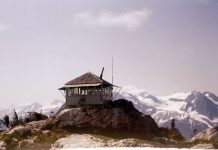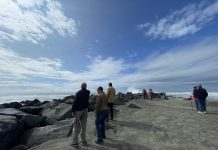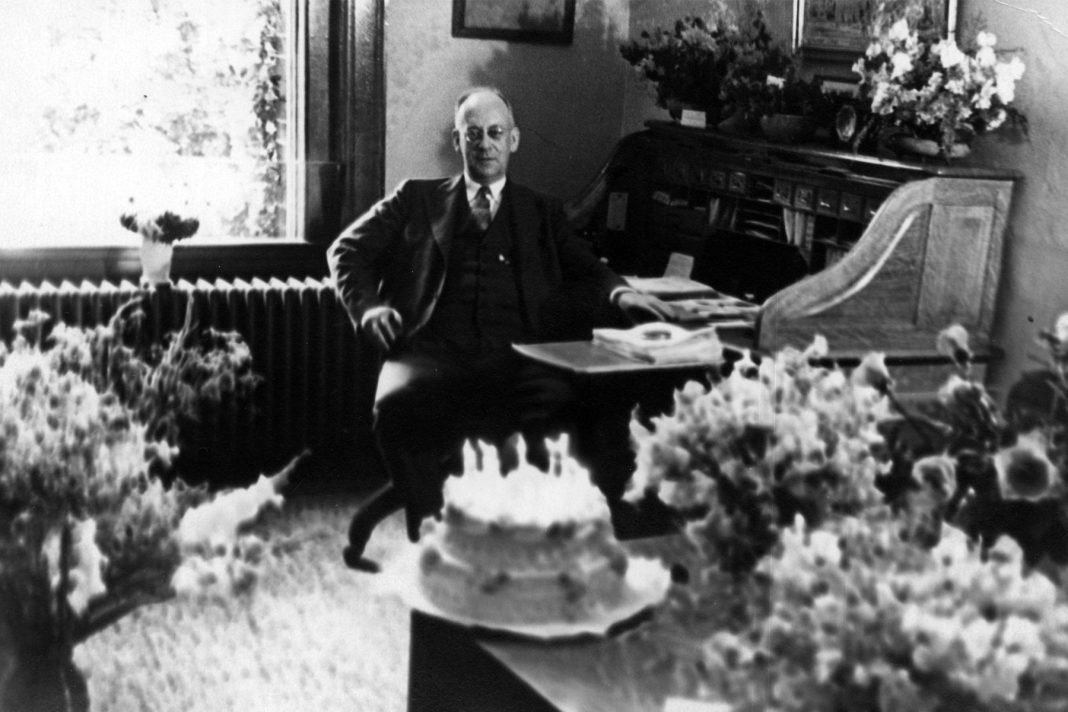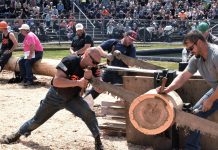As a college town with liberal leanings and increasing diversity, Bellingham can often seem remote from national controversy. Likewise, Western Washington University has a reputation for educating civic-minded people invested in justice. But one understated chapter of local history puts these assumptions in sharp relief: Charles Henry Fisher, Western’s fourth president, lost his job after a politically-motivated committee falsely accused him of communism.
Throughout the 1930s, Bellingham Herald editor Frank Ira Sefrit organized business interests into the Committee of Normal Protest to investigate Charles Fisher for communist sympathies. In reality, Fisher was politically liberal and only in favor of academic freedom.
The incident, footnoted in Western’s history, has obscured Fisher’s influence in shaping the school into the modern liberal arts college it is today. It also thrust Bellingham into the national spotlight of twentieth-century anticommunist panics called “red scares.”
Although difficult to acknowledge, investigating this history shows us how we can avoid repeating it and make a better way moving forward.
Fisher’s Tenure
Fisher served as Western’s president from 1923 to 1939. He had previously served as president of Pennsylvania’s Bloomsburg State Normal School after decades of teaching experience.
Then called “Washington State Normal School at Bellingham,” the institution originally trained teachers. Fisher introduced a wider liberal arts curriculum with extracurricular programs such as Mount Baker hikes, fine arts, and athletics.

Despite the Great Depression, which caused a 50 percent drop in enrollment, Fisher secured funding for present-day Wilson Library in 1928 and a Physical Education Building in 1938.
By 1937, the “Normal School” changed its name to Western Washington College of Education — reflecting new shifts toward the university it would become.
Fisher argued at the committee hearing: “We have turned this institution from a glorified high school, which it was when I took charge of it, into a four-year college type of institution with national recognition.” His opponents would conflate this ideal of progressive education with progressive politics.
Red Scares in Context
Nationally, historians recognize the 1920s and 1950s as the height of Red Scare campaigns. The Fisher case stands at the crossroads of unresolved national tensions and local Depression-era political upheaval.
Over decades in journalism, Frank Sefrit had a history of leveraging the Herald to target political opponents. Formerly friends with Fisher, Sefrit’s enmity grew over the school hosting perceived progressive influences.
Concurrently, Franklin D. Roosevelt’s 1932 election had cost Bellingham conservatives political power. Organizations such as the American Legion and Daughters of the American Revolution targeted perceived “Reds” locally and nationally.
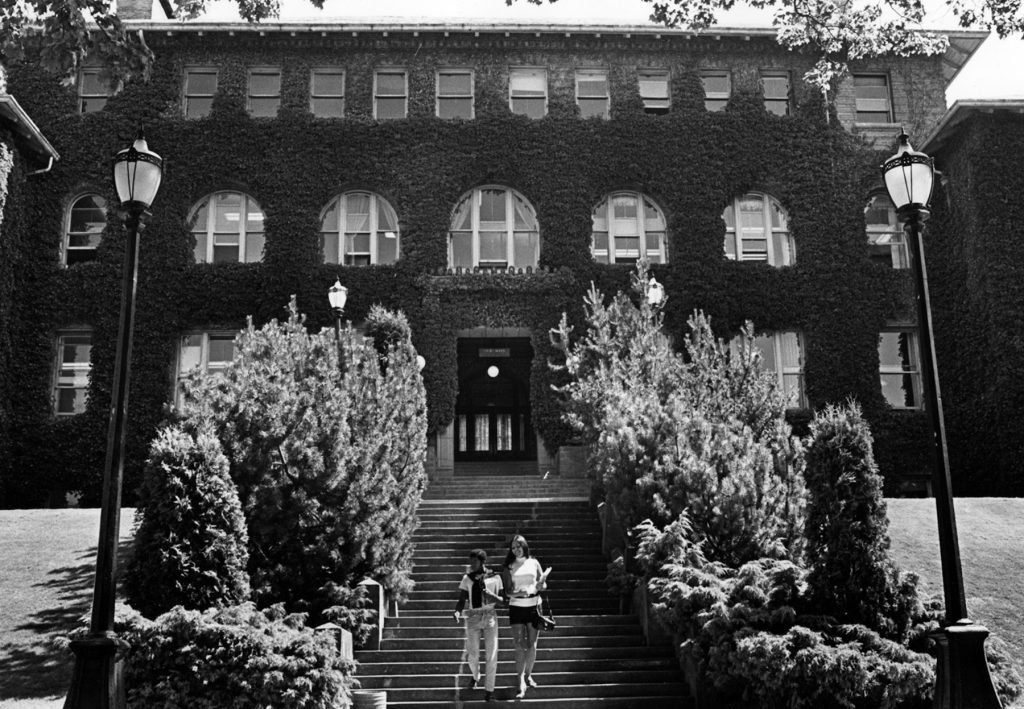
Local spread of reactionary ideology culminated in the Bellingham Ku Klux Klan, which inflamed racist, white supremacist, and anti-Catholic sentiments since 1922. One self-proclaimed “Grand Dragon,” real estate owner Blanton Luther, played a minor role in Sefrit’s committee. (The organization declined due to resistance by the 1940s.)
Other committee members included clergymen, American Legion representatives, and prominent businesspeople such as Arthur W. Deming and Frances Payne Larrabee.
Ultimately, the committee precisely targeted the school’s academic freedom in its students, speakers, and books as “evidence” of communist activity. On December 11, 1934, the student-run Social Science Club in Edens Hall sent a telegram demanding dismissal of charges against striking miners in Ellensburg. Sefrit called this communication “criminal syndicalism.” On April 10, 1935, peace activist Kirby Page spoke in Bellingham in favor of post-New Deal collectivism. Sefrit had a court reporter transcribe the address for evidence.
The Historic Hearing
On May 22, 1935, in the building now called Old Main, Fisher and Sefrit’s committee spoke for five hours with the three men in the board of trustees. The committee brought 10 charges of “un-American” activities, all of which the board dismissed.
The 81-page meeting minutes present the Red Scare in miniature, between Fisher’s defense of academic freedom and Sefrit’s accusatory, editorial tone. At various points, Fisher and board members cautioned Sefrit against asking derailing questions without legal authority. Cooperating fully, Fisher offered to testify under oath — telling Sefrit, “I think I could whip you in court on every question.”

Calling for suppression of school newspaper, The Northwest Viking, Sefrit made accusations reminiscent of later McCarthyism. He argued that organizations such as the American Civil Liberties Union extended freedom of speech and press to include treason and sedition.
Sefrit also argued that the school library should censor or provide teachings to “counteract” numerous books. What he called “this subversive, this un-American, free love, atheistic literature” included muckrakers Upton Sinclair and Lincoln Steffens, political writers Bertrand Russell and Kirby Page, and Russian writer Maxim Gorky.
Fisher rebutted: “Why are you people so alarmed about Communism? It hasn’t a chance in this country.” He rejected Sefrit’s accusations on the basis that exposure to multiple viewpoints promotes critical thinking, as liberal arts institutions encourage today. Fisher concluded: “Our young people have, in my opinion, been given every opportunity to form their own opinions and to think for themselves.”
Despite their dismissal, the committee lobbied Governor Clarence Martin for Fisher’s removal for three more years. In 1938, the board caved to threats of their own removal.
Fisher’s sendoff to the school he loved was addressing and assisting searches for the students lost in the 1939 Mount Baker avalanche. He became president of the Washington Pension Union, subject to a 1948 Red Scare controversy, and advocated to require probable cause in cases of firings like his.
Learning From History
While unduly overshadowed, Fisher’s legacy remains at Western in one central area: Fisher Fountain in Red Square. Humanities chair Arthur C. Hicks said of Fisher at the 1968 dedication: “Among his favorite maxims were these two: ‘Let a hundred flowers bloom and a hundred schools of thought contend’ and ‘Slumber not in the tents of your fathers; the world advances, advance with it.’”

Mount Sefrit in the North Cascades — named for him by connections in the Chamber of Commerce — speaks to an influence lasting beyond Sefrit’s death in 1950.
Once thought lost, the hearing’s meeting minutes resurfaced almost miraculously in 2013. Found in the Herald building’s basement in 2000, they were nearly recycled until an employee sent them to Western’s archive. The Center for Pacific Northwest Studies documents them and other primary sources for this story, which reveal how Sefrit’s conspiracy ran deeper than once known.

Today, journalists such as Ron C. Judd have called for wider public acknowledgment of Fisher and his firing. His initial study, available to read in Western Cedar, uncovered the extent of the conspiracy and involvement of figures such as Frances Payne Larrabee. Judd later investigated the story in the Seattle Times, and Cascadia Daily.
For Bellingham, the story of Charles Fisher is a steadfast reminder to uphold truth against powerful interests that would obfuscate it. We can start by remembering those who worked to make freedom of thought and expression a reality.






